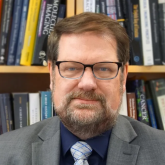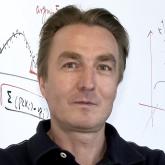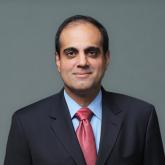A new era of medical imaging

In order to track disease states, how they develop, and how they spread, advancements in medical imaging has become a key focal point in biomedical engineering. At NYU Tandon, we're developing key technologies aimed at tracking diseases and disorders like cancer, lupus, CTE, and much more. Read about just a few of our faculty taking aim at this key area of research.

Andreas Hielscher oversees the Clinical Biophotonics Laboratory at Tandon, where he focuses on developing new medical imaging technologies that use near-infrared light instead of more common X-rays or ultrasound. Light transmitted through the human body, he has explained, can provide information about the blood and oxygen supply in various tissues, and that information can be used by clinicians to diagnose and monitor various diseases–including breast cancer, rheumatoid arthritis, and peripheral artery disease (PAD) in diabetic patients.

Guido Gerig is considered to be among the world’s foremost authorities in the field of medical image analysis, and his innovative methodologies – many of which are acknowledged to be the first of their kind – have been applied in a number of research studies on anatomical changes due to disease, therapy and recovery, as well as to such specific conditions as schizophrenia, autism, multiple sclerosis, and Huntington's disease.
For example, as part of the Infant Brain Imaging Study, a landmark project funded by the National Institutes of Health (NIH) to identify babies at risk for developing autism, he devised software that analyzed scans produced by Diffusion Tensor Imaging (DTI) to show that infants who later developed the condition exhibited early abnormalities in nerve connectivity. Recently, his efforts to quantify 3D dynamic morphological changes in the lamina cribrosa at the rear of the eye, as captured on optical coherence tomography (OCT) scans, has led to a greater understanding of the structural and functional changes that accompany glaucoma and could result in early prediction and diagnosis of the condition, which is the second leading cause of blindness worldwide.

Yao Wang is using machine learning to deliver strong medicine to health care research, diagnostics, self-therapy, and ultimately, prognosis. She has, for example, helped devise a way to detect and manage lymphedema, an incurable obstruction or disruption of the lymphatic system that is characterized by swelling of one or more limbs and that is common after breast cancer surgery, and has investigated the uses of machine learning for detecting and predicting the outcomes of mild traumatic brain injury (MTBI) using advanced MRI imaging.

Daniel Sodickson is a seminal figure in the development of parallel magnetic resonance imaging (MRI), which involves the use of radiofrequency (RF) coil arrays to acquire data in parallel rather than in a traditional sequential fashion and which enabled imaging at previously inaccessible speeds. His latest research involves using machine learning techniques to make MRI scans even quicker and thus less uncomfortable.
He is the founder of NYU’s Center for Advanced Imaging Innovation and Research, which is aimed at developing novel imaging technologies for the improved management of cancer, musculoskeletal disease, and neurological disease — and at getting those innovations quickly from lab bench to patient bedside.

Ivan Selesnick is an expert in digital signal processing, among other areas, and he and his team have developed new signal processing algorithms for numerous types of data and applications — including such biomedical imaging methods as near infrared spectroscopy, optical coherence tomography, magnetic resonance imaging, digital x-ray imaging, electrocardiography, and electroencephalography.
Working with medical researchers, he discovers problems in data analysis and finds ways to apply algorithms to projects of great potential benefit to patients. One of those important projects has involved the development of a new algorithm that boosts the accuracy of the King–Devick (KD) test, an assessment based on eye movement that is frequently used to screen sidelined athletes for possible concussion.

Samir Taneja focuses on the use of MRI to improve methods of prostate imaging, cancer detection, disease localization, and treatment, and his work has transformed the field. He has overseen several clinical trials of innovative techniques for prostate biopsy and targeted focal treatments, including the first randomized study of MRI to ultrasound fusion biopsy and the first multicenter United States trial of prostate cancer focal therapy.

On the path to becoming the previous Dean of NYU Tandon, Jelena Kovačević showed a wide range of scholarship, applying data science in various domains, including medicine. One of her research endevours involved using algorithms to help doctors distinguish between middle-ear infections in children that require antibiotics and those that don’t, and she is an authority on multi-resolution techniques, such as wavelets and frames, which can be applied to signal processing and data analysis.
She was the recipient of the 2022 IEEE Engineering in Medicine & Biology Society Career Achievement Award for pioneering academic leadership in biomedical imaging research and education.

